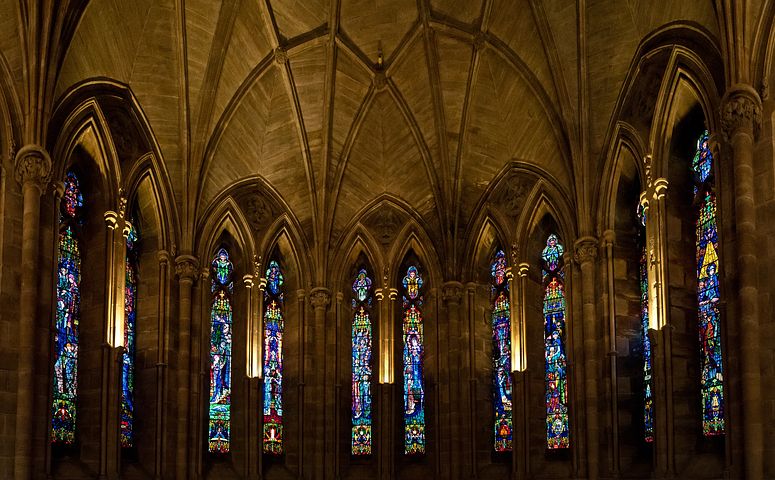 EPISODE SUMMARY:
EPISODE SUMMARY:
In season 3 episode 7 of the Eudo Podcast, we continue our discussion on the imagination by focusing specifically on the Christian Imagination. What is the Christian Imagination? Paul M. Gould discusses why we must move beyond a discussion of the imagination in general to the notion of the Christian imagination.
EPISODE NOTES:
In an essay on the Christian Imagination, the theologian Janine Langan makes a provocative claim. She argues that “there is nothing more fundamental than the imagination” and then, “our loss of respect for it is directly linked to religious apathy.
The reason, according to Langan, is that the imagination plays a fundamental role in mediating the world to us. The imagination delivers to us “a picture of the world in which we can fit, with which we can interact… It colors our view of ourselves in the world from the ground up.”
Thus:
- The imagination is central to our freedom because it gives us the ability to distance ourselves from oppressive givens in order to re-interpret them
- The imagination is central to our uniqueness as divine image bearers because we create in the image of a creating God.
- The imagination is central to a flourishing culture because a loss of community follows upon a loss of common images that unify and galvanize us into common action.
So, what is the Christian Imagination?
Langan provides five dimensions to the Christian imagination:
- First, the Christian imagination is anti-Gnostic. The Christian conception of the imagination does not remove us from physical reality; rather it connects and locates us within physical reality, as “the stage of humanity’s interaction with its God.”
- Second, the Christian imagination is typological. Every moment, every aspect of physical reality, points to the sacred order in some way. Everything has a place and everything finds its place within some overarching story that gives it meaning and purpose.
- Third, the Christian imagination is iconic. This means that the Christian imagination seeks to faithfully reflect God. We see this most of all in art, but I think we see this in nature too. And, whether people are aware of it or not, we have a deep longing to see the face of God in all things.
- Fourth, the Christian imagination is sacramental. All things not only point to the divine but participate in the divine. We find in art, nature, and in humans, the “real presence” of God, for those who have eyes to see. Thus, part of our job is to perform a priestly function of helping others see the sacredness of God-the world-others-ourselves.
- Finally, the Christian imagination is eschatological. One of the shocking realizations of the gospel story is that human life, indeed all of creation, finds its fulfillment in another world. We must learn to see things not only as they are, but as they will be one day. Thus, there is a tight connection between the Christian virtue of hope and the imagination: we cannot hope for something we cannot imagine. We hope for the renewal of all things; we hope for healing and wholeness, but some pains and losses cannot be healed this side of Heaven.
These five aspects of the Christian imagination are all undermined by contemporary purveyors of disenchantment. The images offered by contemporary culture are often
- Anti-eschatological, offering this worldly pleasure only;
- Anti-sacramental, suggesting superficiality and deception, instead of a portal to another world;
- Anti-iconic, tools of idolatry instead of aids to worship of God;
- Anti-typological, disconnected images that no longer point to the sacred order; and
- Gnostic-like in function by removing us further from physical reality by inviting us to mediate our lives through screens and technology.
CONCLUDING REMARKS:
Langan offers three practical steps:
- First, we must learn to “smell out the hidden agenda of imagination manipulators of every stripe.”We must remember that nothing is neutral, and that many of the stories we read and consume are written and produced by those with an agenda.
- Second, Christians must recognize the unique vocation of activating one’s own creativity for the sake of all. Each of us are artists and gardeners, creators and cultivators of the good, the true, and the beautiful. All of us are charged with the task of crafting our own life; to make it a work of art, a masterpiece.
- Finally, the Christian imagination thrives on active participation in the church’s sacramental imagination. To the extent that the church community you find yourself in devalues beauty, your Christian imagination will struggle. On the flip side, if you find yourself in a Church that values beauty, art, and liturgy, your imagination will be nourished and cultivated, and you’ll begin to see and delight in the world (and in others and yourself) as Jesus does.
RESOURCES MENTIONED:
- Janine Langan, “The Christian Imagination,” in the Christian Imagination




